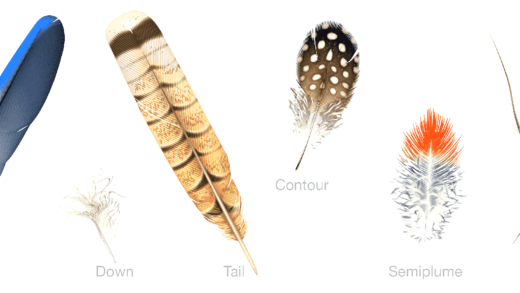Sea cucumbers are vital to marine ecosystems, acting as recyclers of nutrients and organic matter. Their unique life cycle includes external fertilization and metamorphosis into adult forms. There are various types of sea cucumbers, each contributing uniquely to their habitats.
What is a Sea Cucumber?
Sea cucumber is a fascinating marine creature that belongs to the echinoderm family, which also includes starfish and sea urchins. These soft-bodied animals typically have elongated bodies and can vary greatly in size, ranging from a few centimeters to over a meter long. Their skin is often covered with tiny spines, giving them a unique texture. Sea cucumbers come in various colors, including brown, green, and even bright orange. This variety not only makes them visually interesting but also helps them blend into their ocean habitats.
One of the defining features of sea cucumbers is their leathery skin, which helps protect them from predators. They also have a mouth surrounded by tentacle-like structures that aid in feeding. Sea cucumbers primarily inhabit the ocean floor, where they play a crucial role in the ecosystem by recycling nutrients and organic matter.
Why is Sea Cucumber a Delicacy?
In many cultures, particularly in Asian cuisines, sea cucumber is considered a gourmet delicacy. Its unique texture and subtle flavor make it a sought-after ingredient in various dishes. Sea cucumber is often featured in soups, stir-fries, and even as a standalone dish in high-end restaurants. Its culinary significance is attributed to both its taste and its perceived health benefits.
In culinary traditions, sea cucumbers are often prepared in ways that enhance their natural flavors. For instance, they may be braised with soy sauce and herbs or served in a rich broth. The delicacy is also prized for its ability to absorb the flavors of accompanying ingredients, making it a versatile addition to many recipes.
Furthermore, the cultural importance of sea cucumber can be seen in its association with luxury dining and special occasions, where it is often served at weddings and festive gatherings.
Nutritional Benefits of Sea Cucumbers
Sea cucumbers are not only a delicacy but also a powerhouse of nutrition. They are low in calories and rich in essential nutrients, making them a healthy choice for those looking to maintain a balanced diet. Packed with protein, they provide a good source of amino acids, which are vital for the body’s repair and growth.
Moreover, sea cucumbers contain beneficial compounds such as antioxidants, vitamins (like vitamin B), and minerals (including zinc and magnesium). These nutrients contribute to various health benefits, such as:
- Boosting the immune system
- Improving joint health
- Supporting cardiovascular health
- Enhancing skin health
Incorporating sea cucumbers into your diet can be an excellent way to enjoy both their unique taste and their health benefits, making them a valuable addition to any meal plan.
How Do Sea Cucumbers Eat, Poop, and Breathe?
Sea cucumbers are unique creatures, especially when it comes to their feeding, respiration, and waste elimination processes. Sea cucumbers primarily feed on organic material found on the ocean floor. They use their tentacle-like structures around their mouths to gather sand and sediment, filtering out edible particles. This feeding method not only provides them with nutrition but also plays a vital role in the ecosystem by recycling nutrients.
When it comes to respiration, sea cucumbers have a fascinating adaptation. They breathe through a unique respiratory system that includes specialized structures known as respiratory trees. These trees branch out from their bodies, allowing them to extract oxygen from the water efficiently. As they draw in water, oxygen is absorbed, and carbon dioxide is expelled through these trees. This process is essential for their survival in the often low-oxygen environments of the ocean floor.
In terms of waste elimination, sea cucumbers have a simple yet effective system. They expel waste through their anus, which is located at the opposite end of their bodies from the mouth. This process is crucial as it helps maintain a clean habitat and supports the overall health of their environment.
Relationship with Echinoderms
Sea cucumbers belong to the echinoderm family, which includes other well-known marine creatures like starfish and sea urchins. This classification highlights their shared characteristics, such as radial symmetry and a water vascular system. Sea cucumbers, however, have a more elongated body compared to their starfish and sea urchin relatives. While starfish are often recognized for their arms, sea cucumbers are more cylindrical and flexible, allowing them to move across the ocean floor.
The relationship between sea cucumbers and other echinoderms can be seen in their evolutionary lineage. All echinoderms share a common ancestor, and while they exhibit different forms and behaviors, they contribute to marine ecosystems in complementary ways. For instance, while sea cucumbers recycle nutrients, starfish may control the population of mollusks, showcasing the interconnectedness of these species.
Sea Cucumber Habitat
Sea cucumbers thrive in a variety of marine habitats, primarily found on the ocean floor. They inhabit sandy, muddy, or rocky substrates, often in deep waters but can also be found in shallower regions. Their adaptability allows them to live in diverse environments, from coral reefs to deep-sea trenches.
These creatures are often seen in the following habitats:
- Coral reefs, where they help maintain the health of the ecosystem.
- Seagrass beds, providing shelter and a feeding ground.
- Deep-sea environments, showcasing their ability to survive in extreme conditions.
- Intertidal zones, where they can be found during low tide.
Their presence in these habitats is crucial for nutrient cycling, as they break down organic matter, contributing to the overall health of marine ecosystems.
Ecological Role of Sea Cucumbers
Sea cucumbers play a crucial ecological role in marine ecosystems. They are often referred to as “nature’s recyclers” due to their ability to recycle nutrients and organic matter found on the ocean floor. As they consume sediment, sea cucumbers break down organic debris, releasing nutrients back into the water, which supports the growth of various marine organisms.
Moreover, their feeding habits help maintain the health of the ocean floor. By aerating the sediment, they promote the growth of beneficial bacteria and microorganisms, contributing to a balanced ecosystem. The presence of sea cucumbers can significantly enhance the biodiversity of their habitats, as they provide food and shelter for various small marine creatures.
Additionally, sea cucumbers play a role in carbon cycling. By consuming and digesting organic matter, they help sequester carbon, which can mitigate the impacts of climate change. Thus, the ecological significance of sea cucumbers extends beyond their immediate environment, impacting global ecosystems.
Interesting Facts About Sea Cucumber Life Cycle
The life cycle of sea cucumbers is as fascinating as their ecological role. They reproduce through a process called external fertilization, where males release sperm into the water, and females release eggs. This can result in thousands of offspring, which hatch into larval forms known as auricularia. These larvae are planktonic, drifting in the water column before settling to the ocean floor.
As they develop, sea cucumbers undergo a metamorphosis, transforming into their adult forms. This transition is marked by significant changes in their anatomy and behavior. Interestingly, some species of sea cucumbers can regenerate lost body parts, a characteristic that aids their survival in the wild.
Typically, sea cucumbers reach maturity in about three to five years, depending on the species and environmental conditions. Their lifespan can vary, with some living up to 10 years or more. This remarkable adaptability contributes to their continued presence in diverse marine habitats.
Types of Sea Cucumbers
There is a wide variety of sea cucumbers, each with unique characteristics. The most common types include:
- Holothuria: Known for their thick bodies and often found in shallow waters.
- Stichopus: Recognized for their softer bodies and are often harvested as a delicacy.
- Actinopyga: These species are notable for their elongated forms and are commonly found in tropical regions.
- Pseudocolochirus: Characterized by their vibrant colors and unique textures.
Each type of sea cucumber plays a specific role in its habitat, contributing to nutrient cycling and providing food for various marine species. Their diversity showcases the adaptability of these creatures to different environmental conditions, from coral reefs to deep-sea habitats.





Comments are closed.